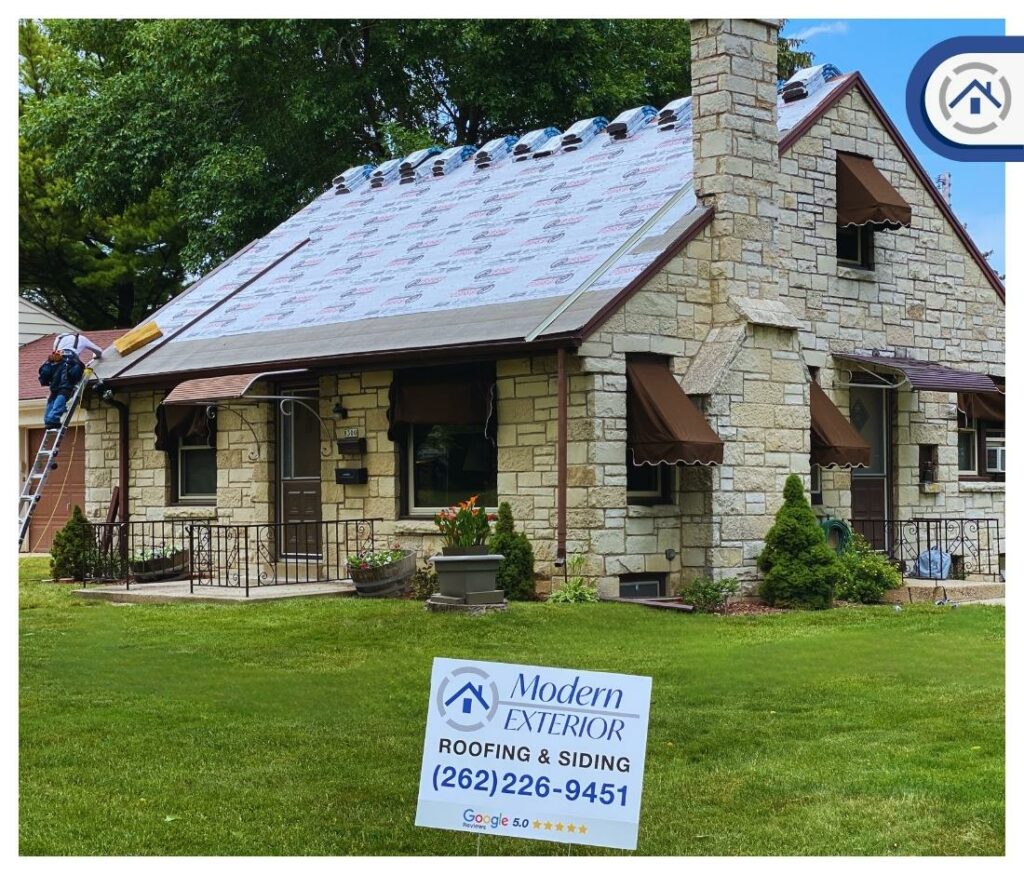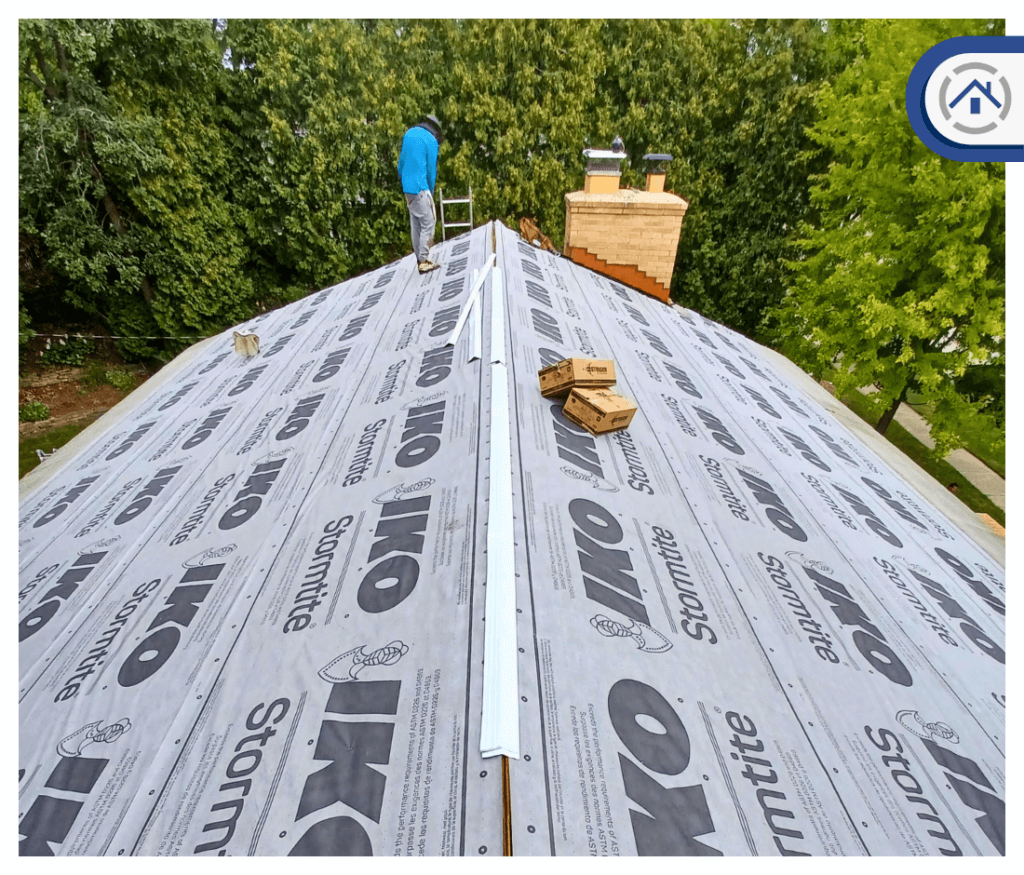
The process of installing a roof extends far beyond the visible exterior components like shingles. While these components play a crucial role, they are just one part of a more extensive system that ensures the long-term integrity of your roof. Beyond the surface, there exists a concealed network of materials designed to fortify your roof against various challenges, with roofing underlayment being a critical element in this framework.
Choosing underlayment isn't like picking a single toy for everyone. It's a careful choice that depends on things like the kind of roof stuff you have, how steep your roof is, what the weather is like, and more. This post will help you learn about roof underlayment and determine which is the best for your needs.

Underlayment is a waterproof or water-resistant barrier between the tiles or shingles on your roof and the wood base underneath. Its main job is to stop wetness from getting into your house, preventing water from causing harm and mold from growing.
Installing roof underlayments directly to the decking using staples or capped nails is vital for a solid and weather-resistant roof. Clean and dry the decking, then overlap underlayment rows, securing them at edges and intervals with staples or nails. Focus on sealed edges around roof elements like vents and eaves. This creates a reliable foundation for the rest of the roofing materials, enhancing overall durability.

Some types of roofing shingles need to be paired with particular brands of underlayment if you want to ensure your warranty remains valid. This means that if you're using these specific shingles, you must also use the recommended underlayment from the same brand. This pairing is crucial because the shingle manufacturer has tested and approved the compatibility of their shingles with that particular underlayment.
Some underlayment materials have specific requirements for the types of fasteners (like nails or staples) that should be used if you want to maintain the validity of your warranty. In other words, if you're using these particular underlayments, you must use the recommended fasteners the manufacturer suggests. This is important because the manufacturer has tested and approved the compatibility of their underlayment with those specific fasteners.
Ice and water shield underlayments are frequently applied on roofs with minimal slopes and areas where water has a tendency to drain slowly. Roof decks are adversely affected by stagnant or slow-moving water, so for roof pitches shallower than 3/12, it's advisable to use ice and water protection. This is particularly important in the most susceptible sections.

1. Overlapping - While overlapping can enhance the quality of the layering, it's important to note that an excessive amount of overlap might change the alignment of the courses in relation to the roof sheathing. In essence, while a greater overlap can offer improved protection, it also has the potential to introduce difficulties related to the overall fastening process.
Striking the right balance between optimal overlap and maintaining the appropriate alignment with the sheathing is crucial to ensuring a successful and effective underlayment installation.
2. Not installing Ice and Water Shields in Valley along roof-to-wall lines and eves and penetrations - Another issue arises when ice and water shield is not installed in important areas like valleys, where roof sections meet, along roof-to-wall connections, and around penetrations. Neglecting these spots increases the risk of leaks and damage due to water infiltration. Proper application in these areas is crucial for a robust, watertight roofing system.
In roofing, the underlayment serves as a vital safeguard against water damage and provides a foundation for the longevity of the entire roofing system. Roofing underlayments are indispensable, from preventing moisture infiltration to bolstering structural integrity. However, given the various types of underlayments available, each designed to suit different roofing materials, pitches, and environmental factors, making an informed choice is paramount.
To ensure the right underlayment is selected—one that aligns with your specific roofing needs, shingle type, and warranty considerations—seeking professional guidance is a prudent step. Consulting experts in the field of roofing can provide invaluable insights, helping you navigate the complexities and nuances of underlayment selection. Their expertise ensures that your underlayment choice optimizes protection and performance and aligns seamlessly with warranty requirements stipulated by the underlayment and shingle manufacturers.